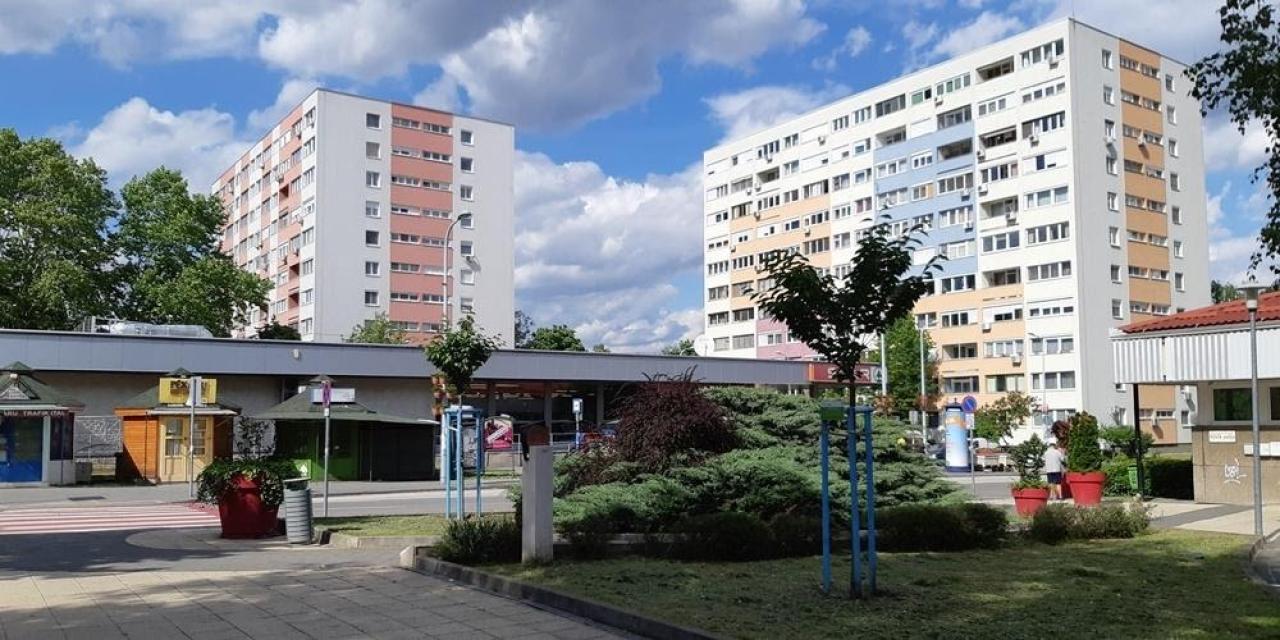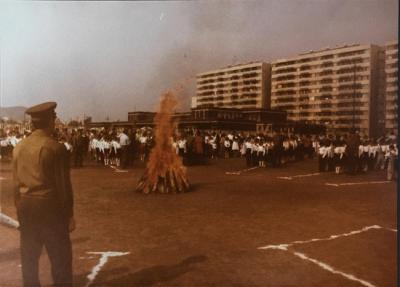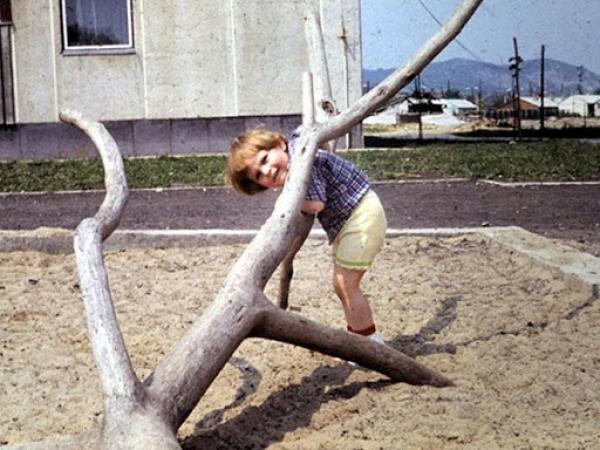
"Every house is interesting,” says the motto of the good practice, the Budapest100 festival which involves volunteers and residents to celebrate the built heritage around us for more than ten years now. But is every house truly interesting? Even socialist housing estates? Are there strong communities in the blocks of houses? If yes, how can we reach out to them? Are there hidden places, uncovered stories? Is there anyone willing to tell these stories?
These were the questions we have been exploring in the framework of the URBACT Come in! Talking Houses / Shared Stories Transfer Network when we started to organize a community festival in Őrmező, Újbuda, Hungary.
The Budapest100 - as it is shown in the name - originally dealt with historic buildings that are celebrating their 100th birthday, buildings with nice courtyards, stunning wrought iron staircases and often ornamented facades, so it’s natural that everyone believes that these houses are more interesting, more sophisticated than socialist housing estates that have rather a pejorative connotation among the general public. But if we start examining the modern built heritage, we might find hidden gems and exciting urban tendencies applying all around Europe.
Őrmező, a village inside the city
Őrmező is one of the most liveable socialist housing estates in Budapest. It is rather small with circa 7000 inhabitants and functions a little bit like a village inside the Hungarian capital. The whole area is closed by rail- and motorways on the edge of the city. At the entrance of Őrmező, there is even a small gate that indicates you are entering something different.
Green areas are everywhere. There are small DIY gardens between the blocks of houses that are consciously taken care of by locals, a quite big and flourishing community garden can be found in the area too. Due to the local municipality’s tree planting program, even the trees have stories in Őrmező showcased on the streets as a living green exhibition. Community areas include parks, playgrounds, and spacious public spaces.
The community life is organized by the local community house, there are civil associations such as the local patriots’ group, local elderly group, and even a brand new playhouse for youngsters.
The local political representative is a true public figure, an exemplary local patriot determined towards Őrmező and its residents. The community is active in different social media groups discussing the everyday issues of the area.
Socialist housing estates come up regularly as a hot topic in urban contexts. In the past few years, different initiatives emerged in Budapest and in Hungary dealing with the topic. A good example is Othernity, the winning exhibition concept for the 2021 International Architecture Biennale in Venice or different urban walk series. In addition, Őrmező is a midst of change in the past few years, metro No. 4 has a stop in the area and a big investment of a business park, BudapestOne is being developed which raises a lot of questions both from the public and the professionals.
So, organising a community-driven public event in one of the most iconic housing estates of Budapest could be also interesting for a professional audience interested in urban issues.
Community-building on the ground
On paper, in Őrmező everything is given for a great community festival, but the practice proved different. Even though Őrmező has all the potentials to adopt the good practice which is based on the three main principles of community-building, built environment and volunteering, Őrmező has raised different challenges. Compared to other project partners, our Urbact Local Group (ULG) leaders had the advantage of participating in the good practice as volunteers and organisers in the previous years. So a bit naively, but with a good intention we thought that following the well-structured method of organising the Budapest100 will result in a nice weekend full of events, workshops, picnics and urban walks organised by the residents celebrating Őrmező and its
Ideas vs implementation
As we were talking to more and more local residents, we gathered a tremendous number of ideas on what we could do to make Őrmező better. The ideas kept coming and coming, but we were unable to find the tools to turn them into practical solutions and operative tasks that make the festival happen.
The good practice gathers approximately 200 volunteers each year from Budapest to organise the Budapest100 weekend. It is a different territorial level indeed, but yet, with the same methods in Őrmező we gathered 3 (!) volunteers altogether, so we had to change our strategy to engage locals. Our attention was drawn to a freshly started Facebook group that gathers old photos from Őrmező. The group was very active, people were sharing family pictures, discussing the changes in streets, schools, institutions or just sharing cute love stories that happened decades ago.
Based on the activity of the Facebook group, the enthusiasm of the administrator and the uncovering collective memory of the housing estate gave us the idea to base our festival on the materials showcased in the group and people behind it. With our very few volunteers and some help from the Budapest100 team we started the research the history of Őrmező and combine the facts with the oral history, the anecdotes and personal photos connected to the milestones of Őrmező’s story. In the meantime, we organised regular ULG meetings where we updated the group on how we stand with the ideas and their realisation and where we would need help, but our intentions to activate the local stakeholders whom we called ULG to take part in operative tasks failed completely. So, the festival itself ended up as a two-girl show with supporting roles taken by volunteers from the Technical University of Budapest and the Budapest100 team. The local community was a consumer, a regular audience of the event, rather than active participants. Looking back from several months this might have to do with the fact, that the two girls, Adri Lőricz and myself are not from the area so the whole situation and everything about Őrmező and its community life was new to us.

The one-day event was spent in a good mood, nice weather and with a moderate number of audience (the event was organised just one day after the regular Őrmező Days). The event was opened by a member of the local government and a concert by students of the local music school. In the main square of Őrmező, we held the “Once upon a time in Őrmező” community exhibition, which used old photographs and documents to tell the history of the development of the area which was the main attraction of the festival. Additional community programs included postcard making (the works could be decorated with Vackor the little bear, created by István Kormos, the poet who lived also in Őrmező), retro board games party, and children’ workshops to create a housing estate from various materials and make sculptures to local public spaces. As for a professional event, we organised a panel discussion about the different aspects of urban architecture in the ‘70s. The event ended with a cocktail party in the new youth centre of the housing estate.
What is ahead of us…
Compared to the good practice our event was very different both in concept and realisation. Even though we did comprehensive research discovering the history of the area, combining architectural and socio-cultural research with personal stories, we did not enter any houses, locals only told their stories in writing, not in person and our volunteers came from outside the neighbourhood.
What we have learned from the experience is that community building takes a lot of time, courage and patience. Budapest100 started as a bottom-up initiative that over the years grew out to affect not only the local community but the urban structure and the general attitude toward built heritage in Budapest. Even though Őrmező is in Budapest, it is a closed, village-like community where it is hard to facilitate change and motivate various stakeholders with opposing interests to work together when the driving force comes from outside. The need, the demand for making one place better must come from inside. In our case the project is initiated by the local municipality and the community organiser
At the moment, we are working with an extended group of local stakeholders on a community initiative that closes properly our project. Due to the pandemic we have to be flexible and find hybrid ideas, but I believe finally we are on track.
Tímea Szőke
ULG Coordinator
